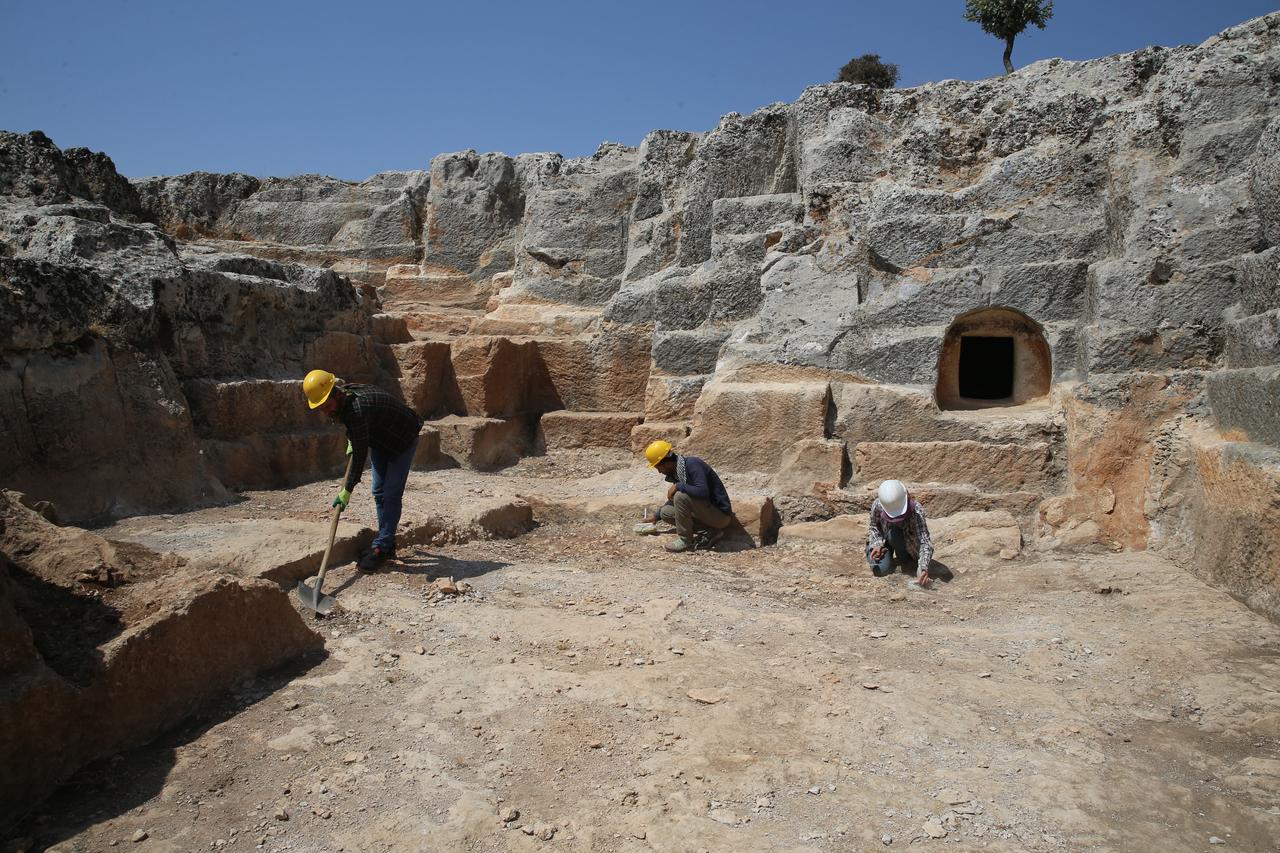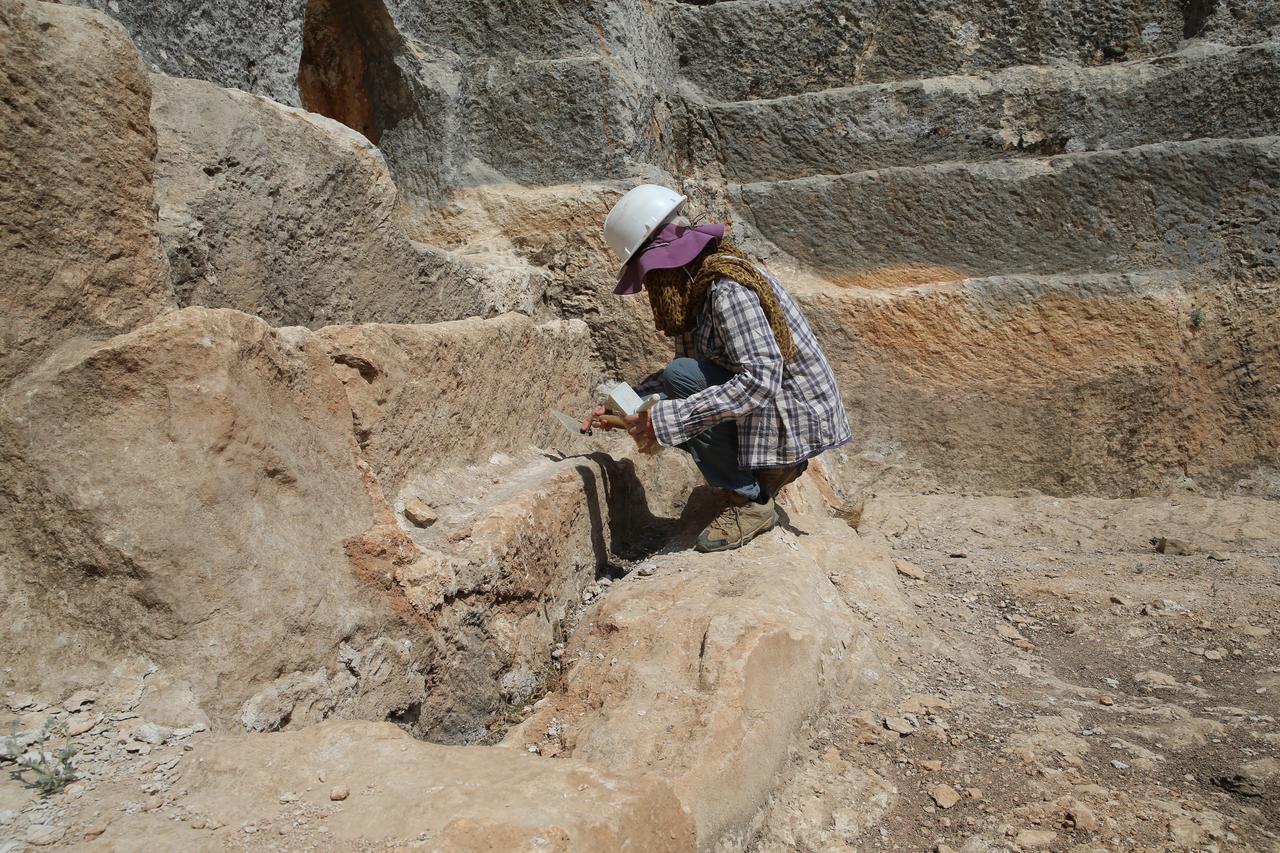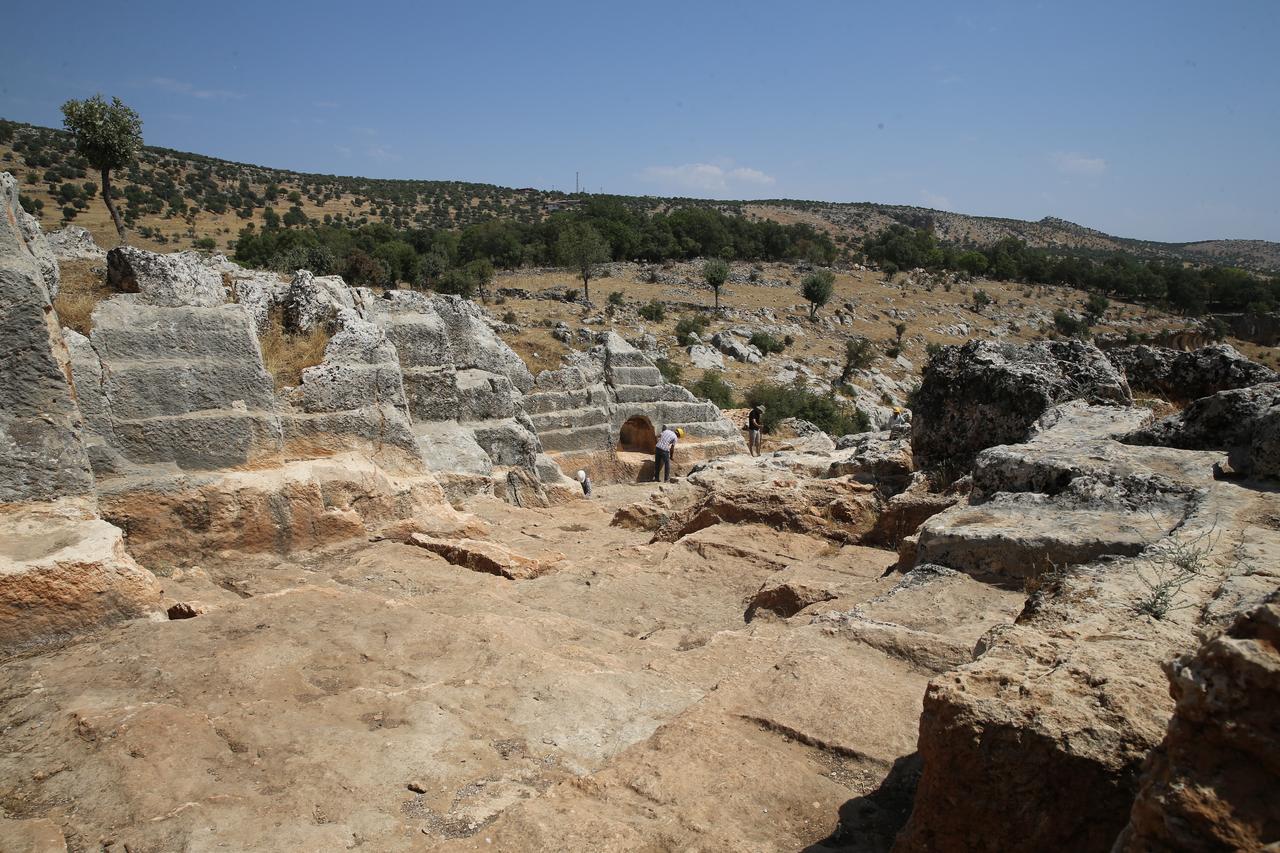
Archaeologists in southeastern Türkiye have uncovered a large Byzantine-era cemetery containing 112 graves and the skeletal remains of 162 individuals, most of them children, in the district of Kulp in Diyarbakir.
The site lies in Inkaya, a rural neighborhood where surveys first detected a bronze cross, prompting excavation by the Diyarbakir Museum Directorate in 2021. Initial research revealed the remains of a church, but in 2023, archaeologists shifted their focus about 500 meters away to a location believed to have been a Roman quarry.
According to experts, the quarry was used during the third and fourth centuries A.D. for stone extraction. In later centuries, under the Byzantine Empire, the site was transformed into a burial ground. Its terraced structure, formed during quarrying, left behind elevated flat platforms that were later covered with up to four meters of fill soil. Excavations gradually cleared this fill, exposing the quarry’s stone base and revealing numerous burials.

Archaeologists found that most of the graves were stone sarcophagi, while a smaller number were independent burials not enclosed in stone. Out of the 112 graves, remains belonging to 162 individuals were identified, including 160 children and infants alongside only two adults. The children ranged from newborns to nine years old.
This unusually high concentration of child burials sheds light on the fragility of life during late antiquity. The graves also contained what archaeologists described as “gifts for the dead,” a practice where small items were placed with the deceased as part of funerary traditions.

Mujdat Gizligol, acting director of the Diyarbakir Museum, explained that the excavation was carried out with approval from the Ministry of Culture and Tourism’s Directorate General of Cultural Heritage and Museums, as part of broader rescue excavations in the Silvan Dam basin.
He noted that the quarry-turned-cemetery provided valuable insights into local history. “So far, we have uncovered 112 graves, most of which were stone sarcophagi. Inside them we found skeletal remains belonging to 162 individuals, nearly all children and infants,” he said. He added that artifacts discovered alongside the burials provided further cultural context.

The bones are now undergoing detailed laboratory analysis by a technical team. Researchers aim to determine the children’s ages at death and whether disease, malnutrition, or other factors contributed to their mortality.
With fieldwork concluded in 2023, only cleaning and preservation work remain at the site. Findings will be published once scientific studies on the skeletal remains are complete.